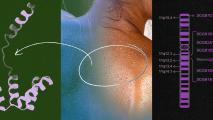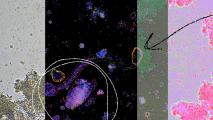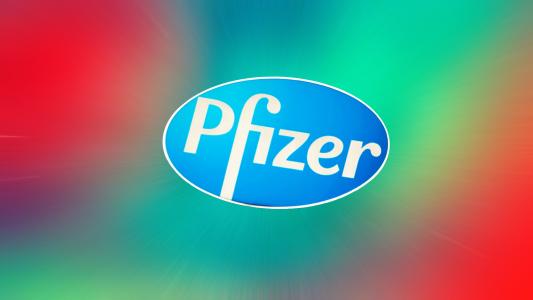A nasal vaccine delivered as a booster to mRNA shots might offer better protection against COVID-19 and help stop the virus from spreading, according to a new Yale study — but funding hurdles could prevent us from ever finding out.
The challenge: The US’s four approved COVID-19 vaccines are all delivered via an intramuscular injection. This trains the immune system as a whole to recognize the coronavirus — if it shows up later, antibodies in the blood will bind to the virus, and the immune system will send T cells to attack the infection.
Since the virus enters the body via the respiratory system, by the time enough immune cells have reached the site of the infection, the virus may have already dug in and spread to other parts of the body.
Even if the immune cells arrive before an infection has time to reach the lungs, the person could still have enough time to spread the virus to others by coughing or sneezing.
“Being local has the advantage of capturing the virus before it even enters our body.”
Aikiko Iwasaki
A nasal vaccine: Throughout the pandemic, researchers have explored the idea of using a vaccine nasal spray to prepare the mucosal membranes of the respiratory system to stop the coronavirus right where it enters the body.
“If you give a vaccine in the nasal cavity, then you create a localized immune response, and that is fundamentally different from what you get with an intramuscular vaccine,” Aikiko Iwasaki, co-corresponding author of the new Yale study, told Time.
“Being local has the advantage of capturing the virus before it even enters our body … If you limit the amount of virus in the body, you also prevent transmission and spread of disease,” she continued.
Prime and Spike: The Yale team is now proposing that, rather than administering vaccines one way or the other, we combine the two.
They call their approach “Prime and Spike” (P&S), and it would see people first receive a regular intramuscular vaccine — that’s the “prime” step — followed by a nasal vaccine booster containing the coronavirus’ spike protein.
The “Prime and Spike” approach could protect us against disease while also stemming the spread of the coronavirus.
The study: To test the approach, the Yale researchers vaccinated some mice intramuscularly with Pfizer and BioNTech’s mRNA vaccine, some with just their nasal vaccine, and some with the mRNA vaccine followed by the nasal vaccine 14 days later (the “Prime and Spike” group).
Only the P&S mice developed high levels of antibodies linked to systemic immunity (IgG antibodies) and mucosal immunity (IgA antibodies).
P&S hamsters deliberately infected with COVID-19 about three months after priming, meanwhile, stopped spreading virus particles sooner than hamsters that were unvaccinated or vaccinated and boosted with an mRNA vaccine.
The bottom line: Yale’s animal study suggests that the P&S approach could protect us against disease while also stemming the spread of the virus better than our current injection-only vaccine approach.
We won’t know for sure until it’s tested in people, though — and funding has been a barrier to getting any in-development nasal vaccines into clinical trials.
“This will only be possible with dedicated funding, priority, and breaking down of any regulatory hurdles.”
Aikiko Iwasaki and Eric Topol
That prompted Yale’s Iwasaki and Eric Topol, director of the Scripps Research Translational Institute, to recently call for a government investment in nasal vaccines akin to “Operation Warp Speed,” which accelerated the development of the original COVID-19 vaccines.
“The objective of breaking the chain of transmission at the individual and population level will put us in a far better position to achieve containment of the virus, no less reducing the toll of sickness and long COVID-19,” they wrote in Science Magazine in July.
“The prospect of achieving this with nasal vaccines is high,” they continue, “but will only be possible with dedicated funding, priority, and breaking down of any regulatory hurdles.”
We’d love to hear from you! If you have a comment about this article or if you have a tip for a future Freethink story, please email us at [email protected].






